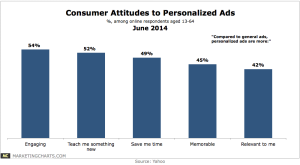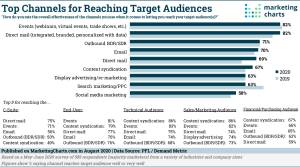If you wish to provide the finest service to your consumers, you must first understand who they are. Of course, not everybody who purchases your goods or services meets the same description. However, as a business, companies should have a core consumer base in mind. That allows for successful streamlining of product offerings. But it also facilitates the greatest possible customer experience.
In this piece, we’ll go over a few ways to better understand a business’ client base. We’ll take a look at both qualitative and quantitative data. We will also review the tools and attitudes you’ll need to get started with discovering target audience.
Definition of the Target Audience
First, let’s look at the term. In a nutshell, a target audience contains potential customers. This set of people is the most likely to love your product or service. A singular person or group of people to whom a business markets goods or services. What is the demographic of the target audience? Age, gender, income, education, and location are some of the useful behavioral and demographic characteristics. When you employ audience groups, you’re focusing on people who will eventually view your marketing messages, not on websites where advertising will be placed.
Discovering target audience for your campaigns might be critical to their success. According to a McKinsey study, ads personalized to clients’ demands can enhance ROI by up to 8 times and increase sales by at least 10%.

Shopper’s attitude towards personalized ads: Source
Advantages of Discovering Target Audience
Marketing campaigns will yield better results once a business completes the process of discovering target audience. That process helps achieve these two objectives:
- Letting go of whatever preconceived notions you may have about your target audience. It’s simple to think that people who are interested in your product are similar to you, but only audience statistics can confirm this. The research of discovering target audience will reveal its genuine characteristics and interests.
- You’ll know what kind of marketing materials to create for your clientele. You’ll be able to create content and other marketing materials that appeal to your audience’s preferences and difficulties after you understand their needs.
These advantages will make it easier to create marketing that resonates with your target demographic, resulting in increased customer retention, sales, and money. After all, seeing your advertisement is one thing; getting something out of it is quite another.
Essential Questions to Ask About Target Audience
These questions should be at the forefront of your thoughts as you identify your target audience:
- Who are the people who would buy your product? To produce omnichannel marketing that your target audience will respond to, you’ll need to understand its characteristics.
- What are their most pressing issues (that your company can address)? You’ll know how to promote your product as a solution after you understand your audience’s challenges and pain points.
- What kind of media do they consume? Consider what types of material your target audience enjoys so you can market to them about similar themes and topics.
- Where do they congregate (both online and in-person)? Once you know where your target demographic consumes marketing, you’ll be able to determine where to place your own marketing assets for maximum exposure.
8 Tips for Discovering Target Audience for a Business
1. Perform market research
You have to begin with conducting market research in order to assess all areas of the market. A SWOT analysis can help you achieve this. It evaluates a company’s strengths and weaknesses, as well as opportunities and threats. Such kind of SWOT analysis templates help in market research to identify the following:
- Location (local, national or international)
- Statistics on the population (age, gender, occupation, income level, marital status)
- Psychographics i.e. the characteristics of people (values, hobbies, lifestyle, personality, attitude, behavior)
- A B2B marketing focus (medical, accounting, lighting, nonprofit)
- Industries (medical, accounting, lighting, nonprofit)
- Market developments
- Changes in the economy
- Purchase habits of customers
- Pain points and personality type (persona)
- Motivations\sCompetition
Knowing all of the aspects that influence your brand’s market and buying path is an essential first step in discovering target audience.

2. Recognize the buying process and its drawbacks
Identify the buying patterns and the pain points your customers face throughout their journey with your brand. This will be a critical aspect, not only in defining your target audience but also in recognizing the factors they consider before making a purchase. Hop in their shoes and try to find the answers to crucial questions. This will help you avoid a crisis by solving the pain points early on.
Additionally, it will help you to create buyer personas and frame content that solves those problems — all while keeping the buying cycle in mind (awareness, consideration, and decision). An ideal user persona is a fictitious character based on research that helps you depict the many user types who may interact with your brand in a similar way.
Personas will assist you in better understanding the needs and pain areas of your target customer and brand’s users. Tailored important messages and content that speak directly to those personas will increase the likelihood of moving them down the sales funnel.
3. Interview current customers
While customer surveys can provide you with general information about the individuals who like your product, one-on-one interviews can provide you with more specific information about individual customers’ experiences. These chats will provide you with deep emotional information that will help you understand customer engagement with your brand.
Keep the following suggestions in mind as you organize and conduct client interviews:
- Establish a clear objective for your interview: Create an interview objective that your questions will tie back to, much as you did with your customer survey.
- Open-ended questions yield better results than closed-ended questions, as we discussed in our approach to interviewing subject matter experts. A cue such as “Tell me how you prefer to use our product” will elicit more information from a consumer than a query such as “Do you find our product useful?”
- Keep an open mind: All the experts on customer interviews note that it’s normal for a consumer to speak badly about your product. Indeed, these responses will assist you in determining what your audience dislikes and how to improve their experience.
- Finish with a tried-and-true journalism trick: Because you’re both people with different perspectives on life, your inquiries are unlikely to cover everything your consumer wants to express. Because of this, many journalists like to ask, “Would you like to add anything to this interview that I haven’t inquired about?” Reporters who implement it frequently declare that it provides them with some of their most intelligent responses.
4. Seek help from Google Analytics
Google Analytics is a powerful tool for gathering demographic information about your audience as well as their interests. Remember from earlier that this is crucial information for discovering target audience.
You may observe website insights with analytics, which are divided into groups such as age, gender, and geography. These areas are clearly labeled on the dashboard, and vivid graphs are provided for you to interpret.
This feature also helps you segregate new visitors from repetitive ones, and cater to their needs accordingly. Such information is valuable as it will help you deliver powerful brand messages that are relevant to the audience.
5. Investigate your competition
If there are companies offering a similar product to yours and have been doing so for years, they already have a good understanding of the target markets to find an audience. Examine their social media platforms, the kind of people who like their postings on a regular basis, and the types of content that get a lot of attention.
If your competitors are consistently appealing to a specific demographic—say, professionals in traditional industries—it may reflect in everything from their tone of voice to visuals showing people in business attire, which can inform how you present your brand as well.
Also, see if you can locate the portions that aren’t functioning properly. Consider how you can make it better through competitor analysis. Get a sense of the types of blog posts they publish on a regular basis. Is it possible for you to write a comparable post on your own products?
6. Take a look at the data from social media
When do your followers spend the most time on your social media channels?
Is it when you share a humorous meme on Instagram or start a Twitter poll?
You can receive a couple of indications into what material your audience is interested in by looking at these questions, thereby filling in one of the pieces needed to determine a target audience.

Share of companies using social media analytics for market research – Source
Because each social media site is unique and has a distinct audience, it’s critical to examine your metrics across all platforms. Twitter, for example, caters to a younger demographic, whereas Facebook caters to an older demographic. Similarly, Twitter is built on short-form content, whereas Facebook allows you to submit long-form and video content.
Instagram is a visual-based social media site, so aesthetically attractive content would thrive on the platform. With this information, you can start planning your strategy.
You can find out who is looking at your profile using analytics. Furthermore, they can inform you what content is working and what is not. You can get followers in your target market by providing omnichannel social media customer service and posting content that your audience is more interested in.
7. Examine your most popular (and least popular) content.
Examine the stats for your blog entries to identify which themes and approaches are most popular with your readers. While page views and bounce rates are useful indicators, content analytics provide even more information. Consider the following metrics:
- Click-through rate: Readers who respond to your blog post’s call to action
- Time spent on page: The average amount of time readers spend on the page of a blog post
- Conversion rate: The number of people who respond to your call to action vs the number of people who visit your blog article is known as the conversion rate.
You can look at these figures using your choice analytics platform or undertake a comprehensive content audit depending on how much time you have.
8. Anticipate, predict, and plan for future
It’s just as crucial to make a plan for future customer interaction as it is to make a plan for the present. This puts customer service representatives in the correct frame of mind to deal with customers in stressful or difficult situations. You can curate personalized email, and automate various operations like push notifications and SMS communication.
Making an action plan will help you stay on top of your competition. However, you should keep your target audience at the center of the strategies. You may have been startled to learn things about your target audience that you didn’t expect or that contradict your assumptions about them during this process. Rather than reverting to previous mass marketing tendencies, it’s critical that you retain an open mind during this process and trust that your new target group is founded on study and evidence. With greater conversion rates, increased client engagement, and retention, you will reap the benefits over time.
Discovering Target Audience
That’s all there is to it! You now have everything you need to find and grow your perfect target audience, as well as develop content that speaks directly to their needs. This establishes a strong basis upon which you may build your brand. You’ll be able to fine-tune your brand messaging and marketing plan if you put in the effort up front to define your target demographic.
You can also interact with your audience to understand their perspective through a sophisticated chat service. Reach out to our customer service software of LiveHelpNow to build a thorough customer service strategy that includes live chat, ticket management, as well as a comprehensive knowledge base.



